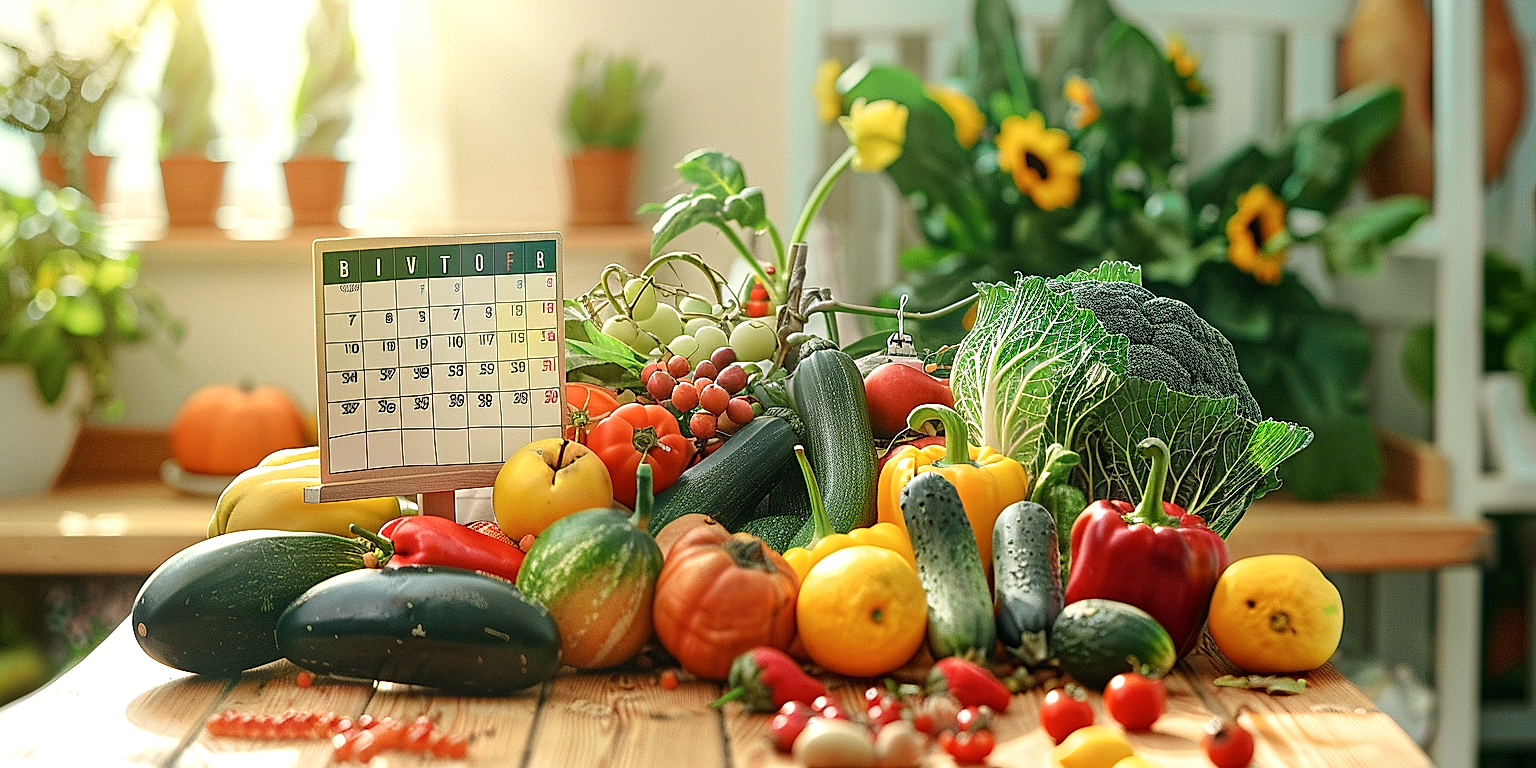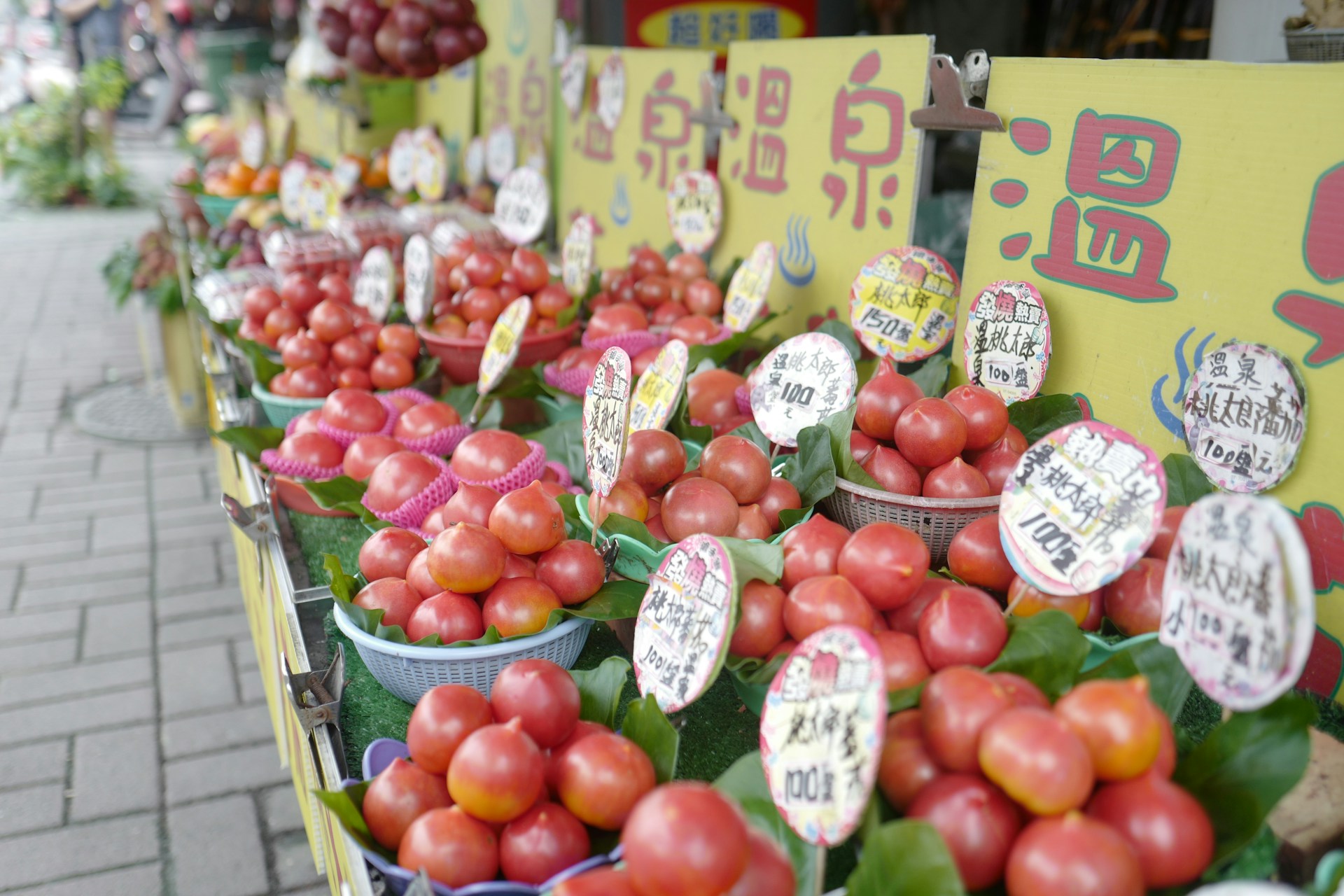In the highly competitive field of produce retailing, effective pricing strategies are crucial.
Your business needs to stay profitable while offering value that attracts and retains customers.
It’s a delicate balancing act, requiring careful planning, constant monitoring, and timely adjustments.
This delicate process can be significantly improved by a promotional pricing strategy.
However, creation of such a strategy is far from straightforward.
It necessitates a thorough understanding of market dynamics, customer behavior, and operational costs.
Contents
- Tips For Creating Promotional Pricing Strategies In Produce Retail
- 1. Identify Seasonal Trends for In-Demand Produce
- 2. Monitor Competitors’ Pricing Strategies
- 3. Develop Attractive Bulk Purchase Discounts
- 4. Implement loyalty programs with exclusive discounts.
- 5. Leverage holidays for themed promotions
- 6. Offer flash sales for overstock items
- 7. Highlight Health Benefits to Justify Pricing
- The Bottom Line
Tips For Creating Promotional Pricing Strategies In Produce Retail
1. Identify Seasonal Trends for In-Demand Produce
For most produce retailers, the concept of seasonality is not a foreign one.
Understanding how demand for certain fruits and vegetables peaks and wanes throughout the year is essential to developing effective promotional pricing strategies.
The success of your promotional plans partially hinges on your ability to anticipate and adapt to these seasonal trends.
This information is, therefore, an invaluable resource in structuring your pricing strategies.
As a retailer, your overarching goal should be to maximize profitability.
Acknowledging seasonality trends and aligning your promotional plans with these patterns can significantly improve your sales and revenue performance.
In other words, knowing when to offer discounts on certain fruits or vegetables and when to charge a premium is critical to your retail success.
This requires diligent tracking and analysis of historical purchase data.
Existing customer data can reveal seasonal buying behavior, allowing you to predict with some degree of certainty when demand for certain produce will be high or low.
For instance, pumpkins are likely to be in extremely high demand during the Halloween season, offering you the chance to capitalize on the heightened demand.
On the other hand, sales for refreshing fruits like watermelon or citrus may spike in the summer, allowing you to mark up the prices for maximum profits during those months.
However, it is also crucial to consider the external factors that might influence produce demand.
Weather conditions, farming trends, or even global events like the current pandemic can upset traditional demand patterns, necessitating adjustments to your promotional strategy.
For example, a sudden cold snap could decrease the availability of certain fruits or vegetables, increasing their value and, subsequently, their retail price.
As such, an optimized promotional strategy in produce retail should be rooted in a comprehensive understanding of the seasonal dynamics of supply and demand.
Remember that a meaningful promotional strategy, anchored in seasonality trends, can serve as a catalyst to boosting both brand visibility and sales.
2. Monitor Competitors’ Pricing Strategies
Understanding the pricing strategies of your competitors is a crucial aspect of promoting your products effectively in the produce retail business.
It provides insights into the kind of pricing models that could work for your business.
It is important to research and analyse how your competitors are pricing their products.
You need to identify if they have any special offers, discounts, or loyalty programs in place.
If they do have such pricing models, you should study the conditions and exclusions they have put forth.
Understanding your competitor’s strategies can give you an edge, providing the necessary knowledge to enhance your own pricing strategies significantly.
You can adopt similar strategies or create better strategies based on these insights.
It’s crucial to trust reliable sources for this information.
Look for information from their advertisements, websites, social media accounts, and public statements.
If possible, encourage direct communication with your customers to get their perspectives on your competitor’s pricing.
A customer’s perspective has raw insights, which can help your business greatly.
When formulating your pricing strategies, consider not only the price points but also perceived value.
Remember that customers are willing to pay a higher price for a product if they perceive its value to be higher.
It’s not just about making your products cheaper, it’s about making them more valuable.
Emphasizing the health benefits, ethics of farming, or other value-added aspects of your products can justify a higher price.
Lastly, do not forget to regularly update your competitor’s pricing strategy research. This is a not a one-time task as pricing strategies evolve over time based on market dynamics.
3. Develop Attractive Bulk Purchase Discounts
In the competitive world of produce retail, one strategy that can help maintain a competitive edge is developing attractive bulk purchase discounts.
Offering these discounts not only helps to increase sales volume but also fosters customer loyalty.
However, creating such a pricing strategy requires careful planning and execution.
A successful bulk purchase discount strategy is not just about slashing prices—it needs to be financially sustainable for the business as well.
Offering bulk purchase discounts can also contribute to waste reduction by encouraging customers to buy in larger quantities, reducing the likelihood of produce spoiling before it can be sold.
Understanding your customers’ needs and shopping habits is crucial in determining the discounts to offer for bulk purchases.
For instance, if your customers usually shop for large families, offering larger discounts for larger purchases may be an effective strategy.
On the other hand, if your customers are primarily singles or couples, smaller bundles with relatively smaller discounts might be more appealing.
Knowing the demographics of your customer base will allow you to tailor your discounts most effectively.
An important part of developing bulk purchase discounts is setting a discount threshold.
This threshold, which determines the minimum quantity a customer must purchase to receive a discount, should be set at a level that encourages customers to buy more than they typically would.
And while the discount amount is certainly a draw for many customers, the perceived value of the deal can be just as important.
You should therefore strive to create bulk purchase deals that seem generous, even if the actual monetary discount is not extremely large.
This can be achieved by playing with the presentation of the deal, such as using terms like “Buy one, get one free” instead of presenting it as a 50% discount.
Lastly, remember to promote your bulk purchase discounts effectively—consider using signs in your store, emails to your subscribers, and social media posts to spread the word.
By implementing these strategies, you can develop bulk purchase discounts that attract customers and boost your sales.
4. Implement loyalty programs with exclusive discounts.
Creating and implementing a loyalty program for your customers is a golden key in enhancing customer retention and encouraging more purchases.
Offering exclusive discounts to members of your loyalty program gives them a feeling of being valued which, in turn, solidifies their loyalty to your store.
Moreover, these loyalty programs can involve tiered rewards which earns the shopper more benefits as they increase their spending.
Loyalty programs also give your store a competitive edge by offering unique rewards that competitors may not be offering.
Loyal customers also become advocates for your store, spreading the word about the benefits and discounts available which can attract new customers.
Well implemented loyalty programs have the potential to significantly increase the lifetime value of a customer.
It is important to keep your loyalty program simple and easy to understand to avoid confusing your customers and deter them from using the program.
Remember to present the rewards in a manner that will appeal to your target demographic.
For example, if your target consumers are health-conscious, offer them discounts on organic products or the much in-demand produce during certain seasons.
Rewards do not always have to be in form of discounts, they can also come in the form of additional services.
You could offer priority shopping times or exclusive access to new merchandise as part of your loyalty program.
Regularly reviewing your loyalty program ensures it remains competitive and continues to offer value to your most loyal customers.
Consider engaging your customers directly to get feedback on ways you can improve the loyalty program.
Also, leverage your customer data to tailor your loyalty program to meet the unique needs of your customers.
The ultimate goal of your loyalty program should be to enhance the overall shopping experience and create long-term relationships with your customers.
Creating a loyalty program that works for your customers and your store involves a bit of trial and error, but the payoff is definitely worth it.
5. Leverage holidays for themed promotions
Successful retailer entrepreneurs are always keen on leveraging special occasions and holidays to boost sales. For a produce retailer, this is not any different.
Themed promotions during seasonal holidays such as Christmas, Easter, or Thanksgiving can be incredibly profitable for produce retailers.
For instance, during Thanksgiving, a promotion can be devised that involves selling bulk amounts of Thanksgiving dinner essentials such as sweet potatoes, cranberries, and green beans.
Valentine Day’s promotions could feature strawberries, cherries, and other red-colored produce often associated with love and passion.
One of the best ways to make these promotions successful is by creating aesthetically pleasing and eye-catching displays of the holiday-associated produce.
These displays not only attract more customers but also help in setting a festive mood in the store which can lead to increased sales.
Using signage and point-of-sale materials that tie in with the holiday theme can reinforce the promotional message and catch the shopper’s eye.
Moreover, creating recipe cards for holiday dishes using the promotional produce and distributing them to the customers can also help.
It not only gives customers new ideas for celebrations but also promotes the sale of these produce items.
Another advantage of leveraging holidays is the ability to sell products in bundles. For example, during Easter holidays, you can sell an ‘Easter Dinner Bundle’ that consists of all the fruits and vegetables necessary for traditional Easter dishes.
This strategy not only helps increase the volume of sales but also enhances the customer’s shopping experience, making them more likely to return.
Consider offering a discount to customers who choose these bundles, which again promotes more sales and makes customers feel they are getting a value deal.
Moreover, themed promotions are also the perfect opportunity to clear out stock that is close to its expiration date or is overstocked.
Integrating digital marketing with your themed promotions can also yield a significant impact. Sending festive-themed emails and posting about your holiday deals and promotions on your social media platforms can attract more customers.
In essence, themed promotions during holidays represent a huge potential for parking up heavy sales and increasing profits for a produce retailer.
6. Offer flash sales for overstock items
One of the most effective strategies for promotional pricing in the produce industry involves the utilization of flash sales for items with excessive stock.
Overstock can be a complex issue for retail produce as it increases logistical and storage costs and can result in significant wastage if some produce gets spoilt.
To resolve this, offering flash sales can be an excellent solution.
This allows for the quick clearance of overstocked items steadily, reducing waste and costs.
Flash sales can be defined as short-term sales that offer significant discounts on specific products.
These sales are often advertised urgently, encouraging customers to make purchases immediately.
By incorporating this strategy as part of your promotional pricing strategy, you can manage overstock much more effectively.
Interestingly, flash sales not only help retailers to clear overstock faster, but they also provide an opportunity to attract more customers to the store or platform, potentially leading to increased overall sales.
However, caution must be taken when implementing flash sales.
They need to be planned and strategically executed so they do not devalue the products in the eyes of the customers or strain the profit margins too much.
For instance, offering overstock items at a significantly reduced price can send a message that your goods are cheaply valued.
Therefore, such sales should be advertised as limited opportunities for the customers to get valuable products at discounted prices and not a common occurrence.
Finally, flash sales should not be used as the primary method of selling your produce.
The normal pricing strategy should remain competitive and realistic to maintain regular sale volumes even without flash sales.
Thus, if implemented correctly, flash sales can be a valuable tool for promotional pricing in the retail produce industry, successfully dealing with overstock, and potentially increasing overall sales.
7. Highlight Health Benefits to Justify Pricing
The world is steadily turning towards health and wellness, and the market for organic and fresh produce is growing exponentially.
As a retailer in the produce industry, it is crucial to leverage this trend to justify your pricing strategy.
One method to do so is to highlight the health benefits of the produce you sell.
Use your marketing materials, such as in-store signage and online content, to educate your customers about the advantages of consuming your produce over others.
This not only gives value to the produce you sell but also builds a sense of trust with your customers.
For instance, if you are selling organic apples, emphasize how they are grown without harmful pesticides and are therefore safer for consumption.
Not to mention, organic foods tend to contain more nutrients, which can be a selling point in your promotional materials.
While it’s true that organic and nutritious produce commonly have a higher price point, these facts provide a justification for their cost.
Existing studies back the additional health benefits organic food brings, and this can be used as a powerful persuasion tool.
As the saying goes, ‘you are what you eat’, and increasingly, consumers are willing to pay the price for the food that is good for their health.
Additionally, aside from the health benefits, it’s important to highlight how buying such produce supports local farmers and promotes sustainable farming practices.
Such ethical considerations often appeal to today’s conscious customers and can provide an additional added value that justifies the higher cost.
Thus, emphasizing on the health benefits and selling not just the product, but the story behind it, can significantly add perceived value to your produce, making customers more willing to purchase despite the higher price point.
In conclusion, highlighting health benefits is not just a way of justifying pricing, but it serves to educate customers and allows them to make informed decisions, driving customer loyalty in the long-run.
The Bottom Line
Given these extensive strategies, it can be deduced that there are a myriad of methods to increase profits in the agri-business industry.
By identifying seasonal trends for high demand produce, monitoring rival pricing strategies, and devising appealing bulk purchase discounts, companies can strike a balance between customer satisfaction and profit maximization.
Additionally, giving priority to loyalty programs and holiday-themed promotions can serve as an impetus for increased consumer engagement and sales.
Overstock can be ably managed with flash sales—highlighting not just the economical aspect but also health benefits tied to produce.
In essence, a judicious blend of these strategies can take any agri-business to the next level, driving profitability and customer loyalty on a sustained basis.




